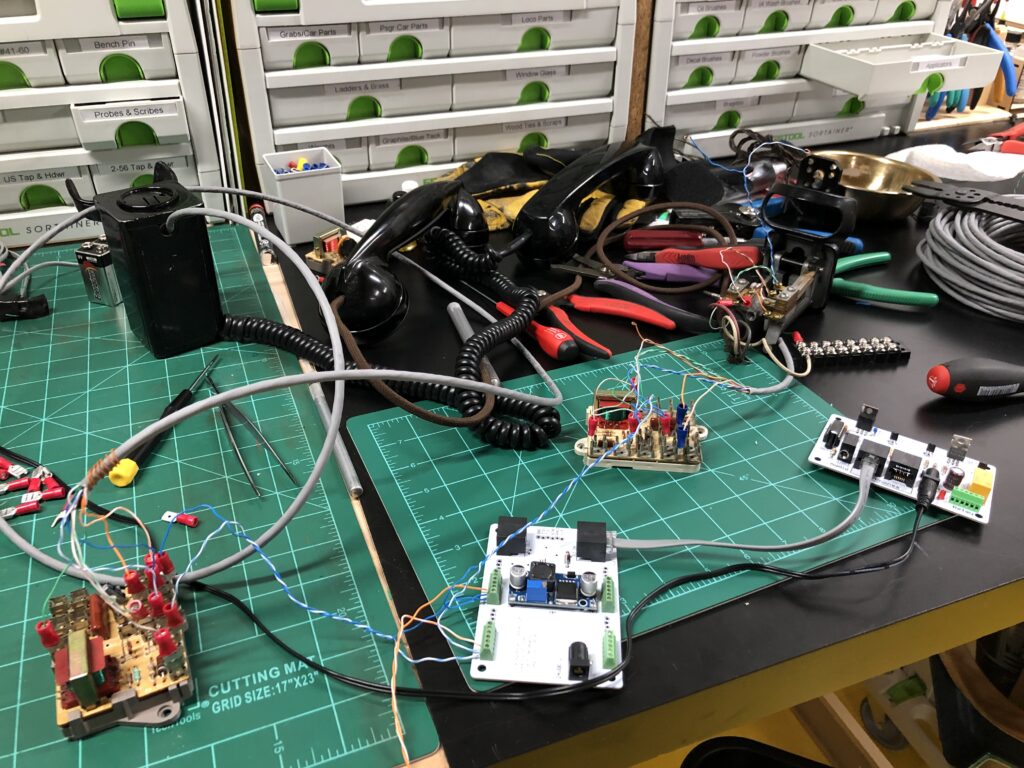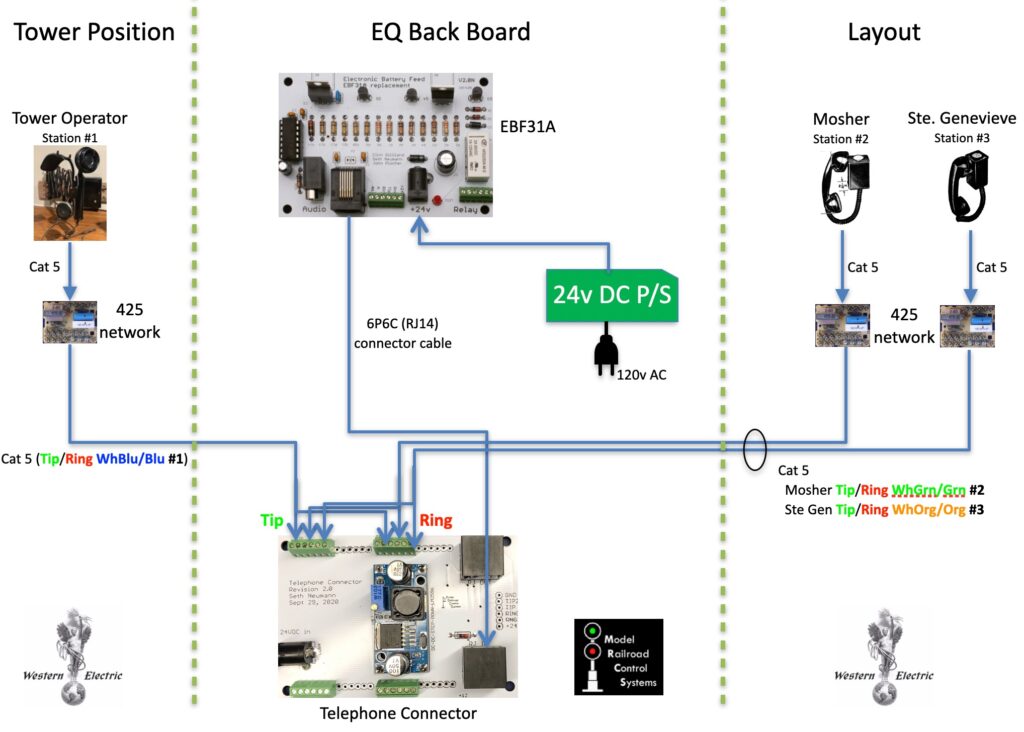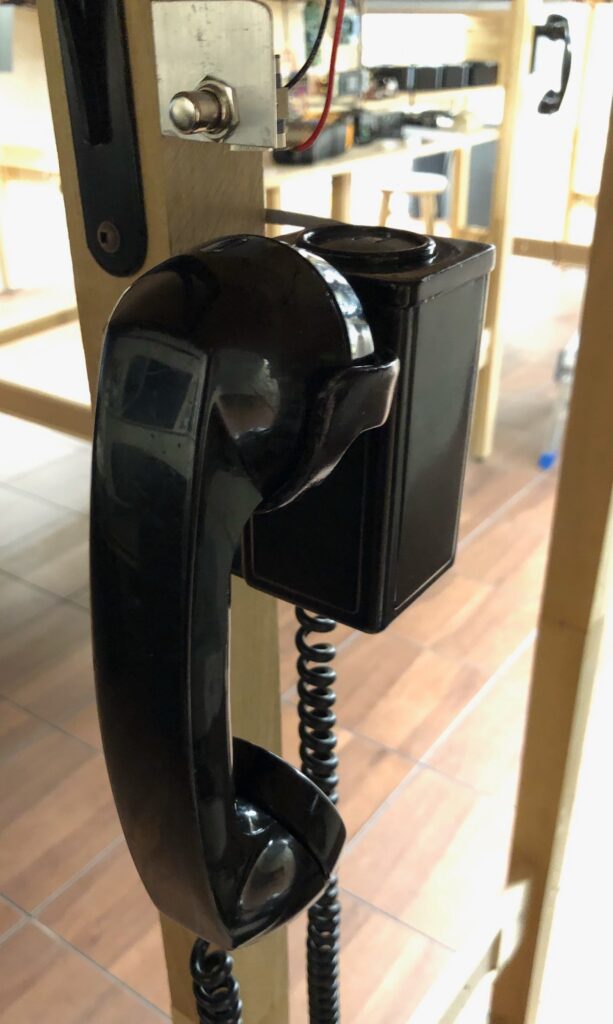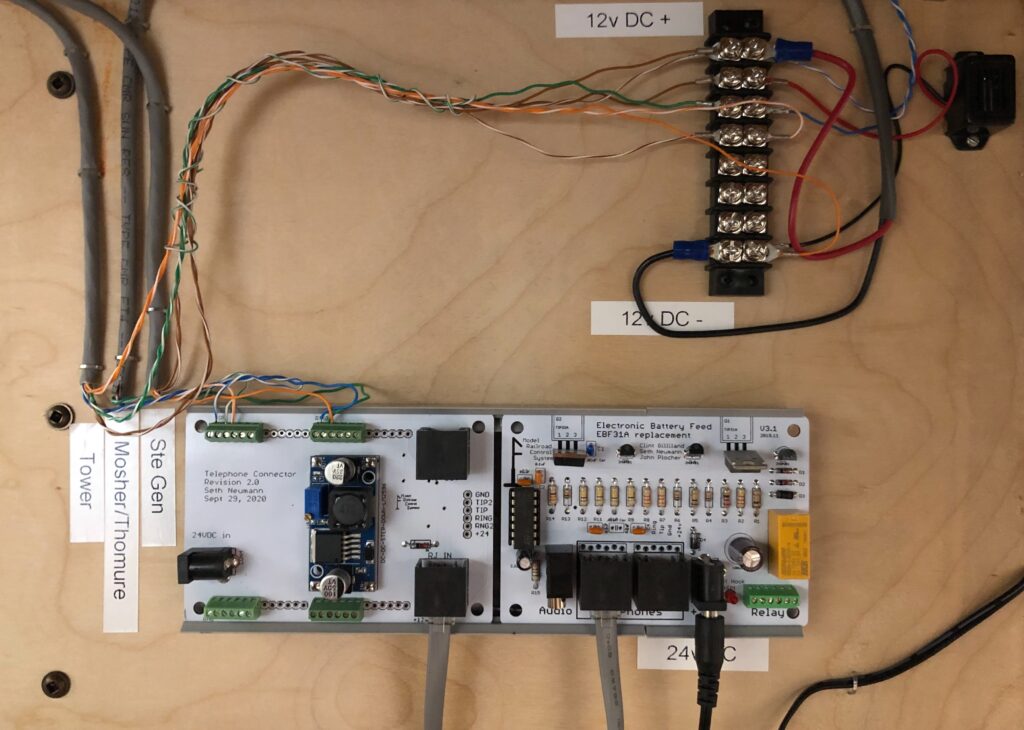While operating on a friend’s layout, the crew was required to contact the tower prior to proceeding over a drawbridge. The tower was aware if any marine traffic was pending which would necessitate raising the bridge. This simple extra step added such a feeling of the prototype that I decided to implement a similar operation on the M-I.
My telephone system is used at the interlock tower where the main line crosses the incline track at grade. The tower operator (TO) controls 4 semaphore signals (as well as the switch to the Ste Genevieve Industrial Lead). Typically, the incline track has senior rights and mainline trains receive a stop indication. When a mainline train needs passage through the interlock, the crew picks up a line side phone to ring the TO for a permissive signal. Sitting across the room, the TO can observe the crossing via a live video feed as if they were actually manning the tower. Once the train clears the interlock, the TO clears the semaphores for the incline crew.
To build the system, I located several vintage telephones online: two Western Electric model 211 Space Savers and a very clean candlestick scissors dispatcher’s phone. As these were all designed for standard Plain Old Telephone Service (POTS) as provided by Bell Telephone and AT&T, modifications were needed to convert for a dedicated private circuit.
Through the NMRA OpSig, I discovered Model Railroad Control Systems (MRCS) operated by Seth Neumann and others. Seth supplied all of the necessary parts to build the system, as well as modernize the phones. If you are interested in building a phone system for your layout (or a signaling solution), I highly recommend Seth and MRCS – he spent several hours via email and phone to help me sort through the hook up and wiring process.
The first step was to disassemble the phones and clean them thoroughly. Once cleaned, I worked to get each phone functioning independently, then tied them into a common system with Cat 5 cabling using the MRCS Telephone Connector. The system is powered with 24v DC supplied by a battery substitute, the EBF31A board.






